THE SETTLEMENT HOUSES
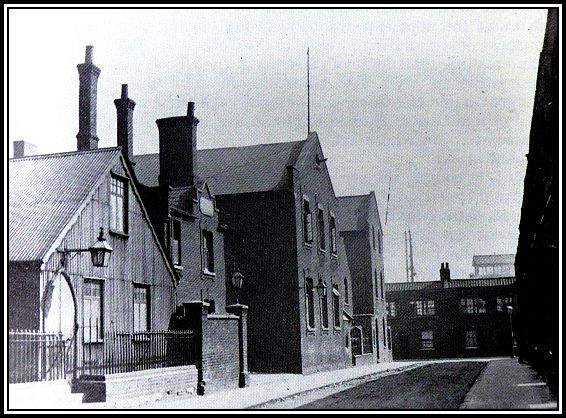 The Original Oxford House on Mape Street in Bethnal Green
The Original Oxford House on Mape Street in Bethnal Green
This photograph is reproduced with the permission of Oxford House and is from
Oxford House of Bethnal Green – 100 Years of Work in the Community by Mandy Ashworth
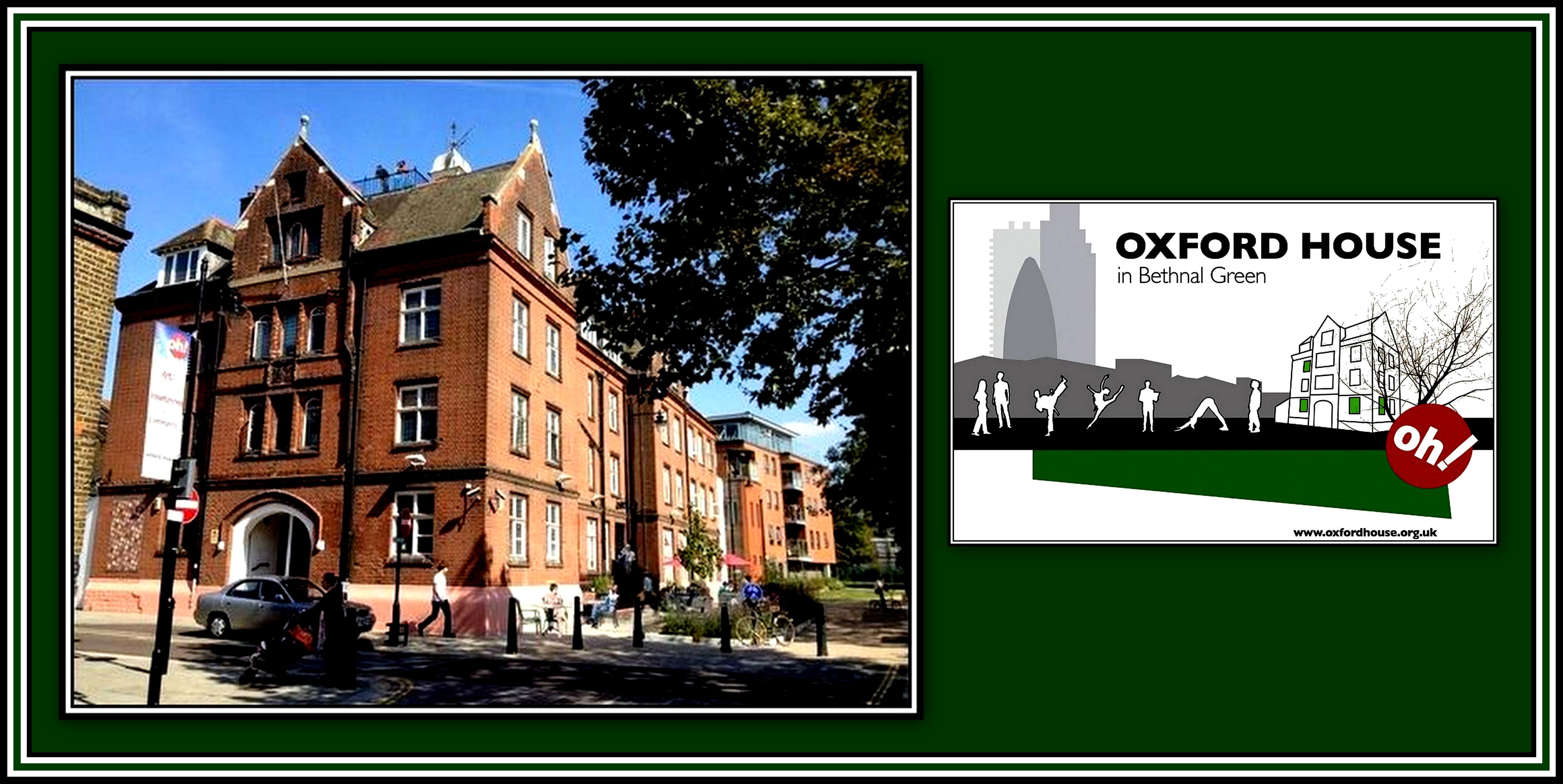 The Original Settlement Houses: (The New) Oxford House
The Original Settlement Houses: (The New) Oxford House
-oOo-
OXFORD HOUSE SETTLEMENT
Religious in Motive while Secular in Working
It seems that the founding and opening of Toynbee Hall was not met totally with praise. A number of scholars at Oxford University felt that it was being administered in an insufficiently religious manner. Heading the list of those with such a feeling was the First Warden of Keble College, Edward Stuart Talbott (1844-1934).
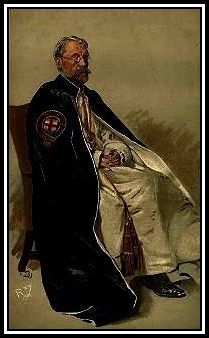 The Right Reverend Edward Stuart Talbott in 1911
The Right Reverend Edward Stuart Talbott in 1911
when he was the Bishop of Winchester and printed in the British Vanity Fair Magazine (1868-1918)
The Right Reverend Talbott was an Anglican Bishop who was educated at Charterhouse School and Christ Church, Oxford, where he remained until 1869 as a tutor, before being appointed Warden of Keble College. In 1888, he became the Vicar of Leeds Parish Church (1889–1895). In 1878, while at Oxford, Dr, Talbott and his wife, the former Honourable Lavinia Lyttelton, daughter of George Lyttelton, the Fourth Baron Lyttelton and Mary Glynne, founded Lady Margaret Hall, the first Oxford Hall for women. At later times, he also held the posts of Bishops of Rochester, Southwark and Winchester.
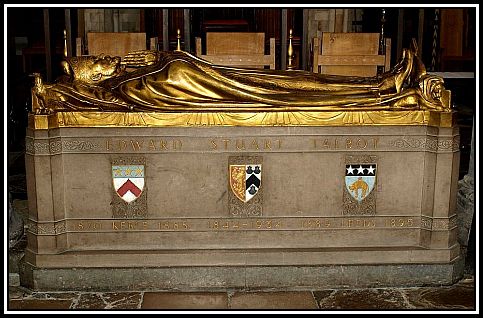 Monument to Bishop Edward Stuart Talbott at Southwark Cathedral
Monument to Bishop Edward Stuart Talbott at Southwark Cathedral
-oOo-
Although there were many that fully supported the work of The Settlement Movement and the concept of educated people living and working amongst the less fortunate of society, there were some that felt that the services being offered at Toynbee Hall was lacking in an important aspect.
The Right Reverend Dr. Talbott, together with a group of other clergymen at Oxford, felt that a more ascetic, denominationally religious settlement needed to be founded in the East End of London.
As a result, a Settlement House, named Oxford House, was opened in 1884 in a National Day School in the Parish of St Andrew at Bethnal Green on Mape Street. Oxford House was led by Dr. Talbott who had been appointed Chairman of an Executive Committee in Oxford and had the support of Oxford University and the High Anglican Church.
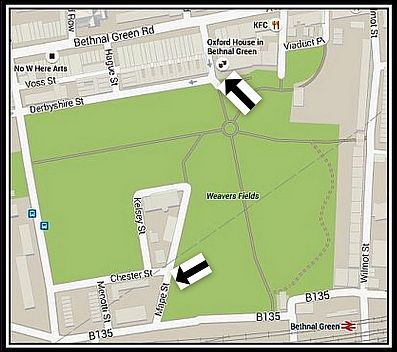 Top Arrow points to The New Oxford House and
Top Arrow points to The New Oxford House and
the Lower Arrow points to the site of the original Oxford House on Mape Street
-oOo-
The School provided bedrooms for three or four graduates while they worked in the local neighbourhood where they gave help and assistance to the poor and needy by means of a number of activities including Boys’ Clubs, a Talk and Smoke Club for working men and Sunday Afternoon Bible Lectures.
It would seem that the Day School was perhaps less than ideal as a work-and-living-environment: none of the rooms was fitted for the giving of lectures or for use as a classroom; one of the clubroom had to double as the resident’s dining room; there was no bedroom space for visitors and three additional rooms had to be rented in a different house in order to accommodate them.
After five years, the residents began asking the supporters of The House to provide them for the sake of the work as well as for their own, with a larger and more convenient House.
-oOo-
In 1884 as soon as the movement for founding Toynbee Hall was under way, a group of men led by the Warden of Keble decided to start a Church Settlement. That men should think it necessary to start another Settlement because Toynbee Hall was not, in their opinion, religious, was a deep, a very deep pain to Mr. Barnett.
Dame Henrietta Barnett in Life of Canon Barnett
-oOo-
The activities of The School were co-ordinated by a Head, a post held by the Reverend E.E. Jackson, the Honourable J.G. Adderley, the Reverend H. Hensley Henson, the Reverend Harry Woollcombe, the Reverend A. Winnington-Ingram (seated at the centre), The Reverend Bernard Wilson and a member of the Council of Keble College.
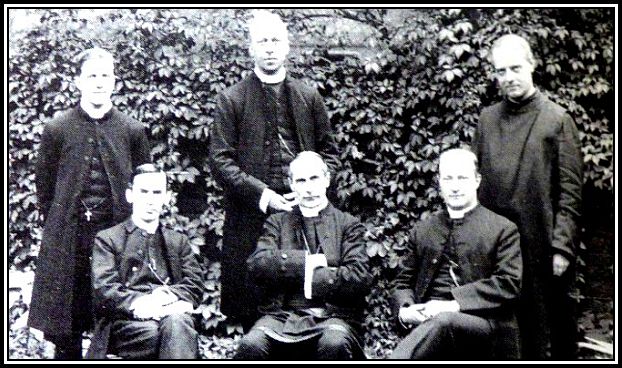 Early Heads of the National Day School in the Parish of St Andrew at Bethnal Green
Early Heads of the National Day School in the Parish of St Andrew at Bethnal Green
(Reproduced from the Oxford House Website)
-oOo-
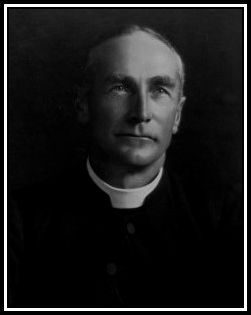 The Reverend Arthur Winnington-Ingram
The Reverend Arthur Winnington-Ingram
(Reproduced from the Oxford House Website)
In 1889, The Reverend Arthur Winnington-Ingram (1858-1946) was appointed as the fourth Head of Oxford House since its inception, a position he held until 1897. Through the tireless application of the Heads and the graduates, the programmes offered at Oxford House had grown and were continuing to grow in popularity. It was now even more apparent that the present location at the Day School on Mape Street was proving insufficient to accommodate the growing needs of the local populace.
As a result, the authorities agreed that Oxford House needed to move from its present location to a new and larger premises where it could to offer current and additional programmes to the residents of the area.
-oOo-
THE NEW OXFORD HOUSE
will be discussed in the next section.
-oOo-
CLUBS & OTHER ACTIVITIES AT THE FIRST OXFORD HOUSE
Through the efforts made at the First Oxford House (1884-1892), a number of Clubs were formed and included a Boys’ Club and a Smoke and Talk facility for men. The School also had a library and arranged lectures for the local populace.
-oOo-
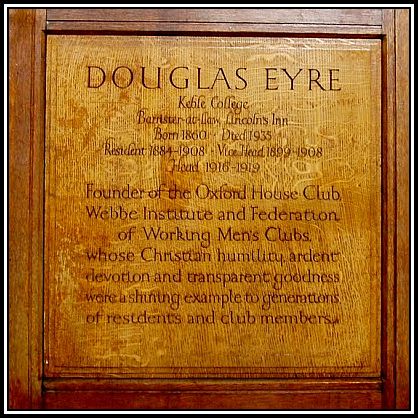 Plaque found in The Chapel of The New Oxford House in Memory of Douglas Eyre (1860-1935),
Plaque found in The Chapel of The New Oxford House in Memory of Douglas Eyre (1860-1935),
Head of Oxford House (1916-1919) and
founder of Oxford House Club, The Webbe Institute & Working Men’s Clubs
In 1886, Oxford House founded the Federation of Working Men’s Clubs, whose mission was to have no political aims, but to promote clubs providing recreation, education, and non-intoxicant refreshment. At this time, Working Men Clubs had gained a reputation for fostering many evils. Most were no more than places for drinking and gambling and apparently favoured a vague, unorganised Socialism.
In 1887, Oxford House founded The University Club on Cambridge Heath Road. By the end of the year, membership had risen to 400. As a result, The Club outgrew the facility and later moved to 16-17 Victoria Park Square where Oxford House had built Oxford Hall at the rear also in 1887. By 1890, the University Club had 1,000 members and offered its members use of a Cafe, a reading room, a billiard room, a Hall and three Co-operative Societies. Attempts were made in 1891 to have The Club stand alone from Oxford House and positions of authority were offered to members in the hope of achieving this. Unfortunately these efforts failed due to jealousies expressed by those not offered posts. In 1910, a rifle range was added to the facilities that apparently became formally independent of Oxford House in 1942.
Also in 1887, The Sick Fund was founded at Oxford House to render assistance in money to any member who is incapacitated from work by sickness. A weekly subscription of one or two pennies were required from members, and after a period of 13 weeks, members were entitled to a weekly allowance of five or ten shillings should they become incapacitated by illness and so off work for the first month and then three or six shillings for the second month. Should a member received two months of relief, no additional claim for assistance could be made for four months. Apparently The Sick Fund had a working balance of sixteen pounds.
The Webbe Institute was founded by Oxford House and opened in 1888 with about one hundred members and was limited to this number since it was felt that no more could be accommodated at that time. The Institute moved to new buildings on Hare Street in March 1889, which were opened by Prince Albert Victor (1864-1892), The Prince of Wales and later The Prince of Clarence and Avondale. The numbers were then allowed to increase to 400 by the end of the year.
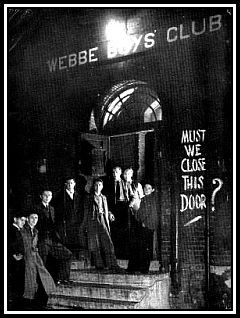 The Webbe Boys Club, 1950
The Webbe Boys Club, 1950
The Mutual Loan Society was formed in 1888 and started, as what used to known as A Christmas Club. The Club was started by its members who subscribed a certain amount of money each week to a Savings Fund. The Fund was used to make loans to members during the year when needed. At the end of the year, just before Christmas, The Fund was shared amongst the members. This led to the establishment of a Savings Bank in The Club.
I remember such Christmas Clubs as a child when I lived in Bethnal Green. Without such clubs, I fear that most families would have gone without food and drink to celebrate the season and also money to buy their children presents!
Sadly in 1892, the Secretary of the Society absconded with most of the Society’s funds. Fortunately for the members, a local business came to their rescue and donated a sum equal in value to the stolen money. As a result, no member suffered hardship.
Also in 1888, The University Club registered a Co-operative Society where goods were on offer to its members. Apparently, roughly 1,000 members made purchases at the Stores every Saturday.
Besides those Clubs mentioned here, a number of other Clubs were started at the first Oxford House. Lecture Series were also offered to the people of the area. For example, during the winter of 1893-1894, lectures on a variety of subjects were promised ranging from: The Study of Various Animals, Health, Human Anatomy, First Aid and An Hour with Dickens. Also, at this time, Oxford House produced over 300 dinners on four days each week for poor children who attended schools associated with The House for the price of one penny. Apparently the children were fed in the Iron Room, which found adjacent to the The House, and were offered a two-course meal and allowed to eat as much as they wished!
-oOo-
My mother was the eldest daughter of a family with nineteen siblings! My mother’s father had been killed during the First World War and her mother had met and quickly married a man, who once married, never did a day’s work again. He chose, like the character of Blanche DuBois in A Streetcar Named Desire, to rely on the generosity of strangers to take care of his children and stepchildren. He had no interest in the children of my grandmother’s first marriage except when he felt like beating them.
My mother was required to take charge of all of the children while her stepfather and mother were involved in their own pursuits. This meant missing school, which she left at the age of eleven although she hardly went prior to her official leaving. She said that she and the children were well known in every Mission and Soup Kitchen to be found in Bethnal Green and Stepney. I fear that she never had sufficient pennies for them to feast at Oxford House, which was most unfortunate.
-oOo-
In addition to the founding of a number of Clubs, which met either at Oxford House within its vicinity, The House also sponsored a number of other ventures for the use of residents of the district. Amongst these were:
- In 1886, The Limpsfield Boys’ Home was set up as a place where boys between 7- and 13-years of age could go for a period of three weeks to experience fresh air and the joys of being and playing outside. The Home, although not large, was able to accommodate twelve or thirteen boys at one time, and had a large garden and a playing field.
- Also in 1886, Oxford House opened a House of Shelter for the Homeless Poor in Commercial Road. The Shelter had space for over one hundred men and women each night and were give a bed for the night and some bread. The occupants were required to vacate The Shelter early each morning and were expected to look for suitable employment.
- In 1889, The Cheltenham Ladies’ College together with Oxford House, opened a Ladies’ Settlement in Mayfield House, which was in Victoria Park Square. The House was able to offer space for six or seven residents and was also the site of a Girl’s Club.
-oOo-
Oxford House also became involved in a number of projects that the Committee felt was of importance to the well being of the community.
One such endeavour was The Provident Society, set up in 1889. The aim of this Club was to provide good medical treatment and medicine on Provident and Mutual Assurance principles. Here, a monthly subscription gave a member and his family medicine, medical advice and treatment, when necessary, in their homes. The Club had its own physician who was assisted by two men from the outside.
Another project that Oxford House was a keen supporter of was the Crusade to Preserve Barmy Park or as it was also known, The Poor’s Lands.
In the early 1700’s, the main house on Bethnal Green, which was known as Kirby’s Castle, was converted into a Lunatic Asylum (a Hospital for the Mentally Impaired) and the surrounding park, Bethnal Park, became known to the locals as Barmy Park.
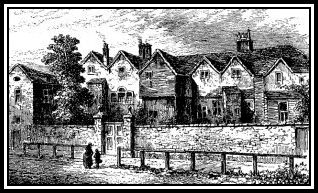 Kirby’s Castle
Kirby’s Castle
Reproduced from Barmy Park – Exploring Art & Madness – Bethnal Green Library
Although the main house and the Asylum have been demolished, some of the adjacent buildings still exist and form part of Bethnal Green Library, which was built in 1896.
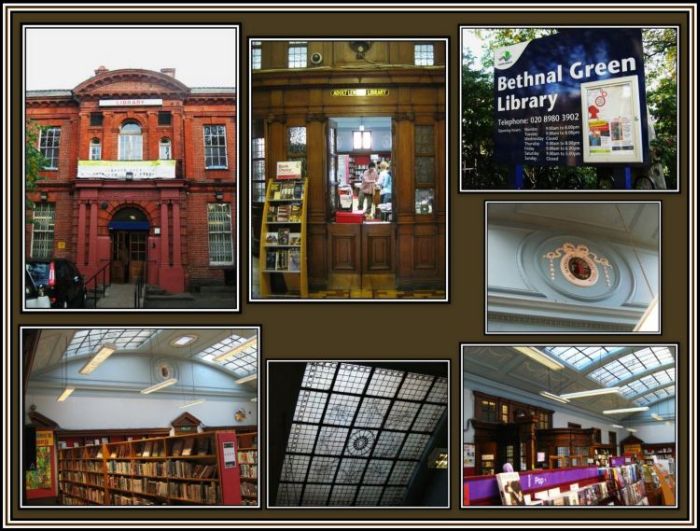 Bethnal Green Library in the 1990s
Bethnal Green Library in the 1990s
The Crusade’s aim was to save Barmy Park, or as it was also known at that time, The Poor’s Lands, from being built on since its supporters believed that the green space was vital to the well being of the local population. Eventually, the area was saved and became a public ground. Today, the greenery of the area is known as Bethnal Green Gardens, many of the locals still refer to it as The Barmy Park.
and offering similar services. The Charity Organisation Society, The Children’s Country Holiday Fund, The Society for the Relief of Distress and The Royal London Hospital were in full support of the work of The House. In addition, Oxford House enjoyed close connections with the local clergy.
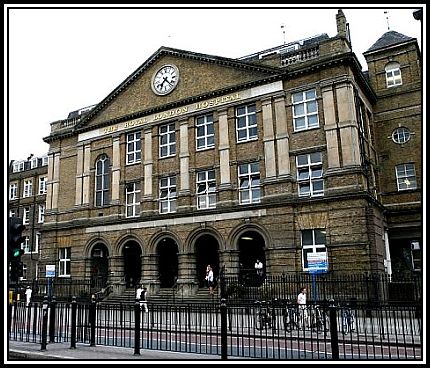 The Royal London Hospital from the 1970s
The Royal London Hospital from the 1970s
-oOo-
——oooOOOooo——
ACKNOWLEDGEMENTS
I would like to thank Mr. John Ryan and Ms Maja Bevk of Oxford House (OH!) for their help in the preparation of this series.
——oooOOOooo——
Readers can TWEET their LIKES & DISLIKES to me at
or
make comments on theWebsite’s FACEBOOK PAGE
or
consider leaving aCommentbelow.
——oooOOOooo——
ACKNOWLEDGEMENTS
I would like to thank the author(s) of The Oxford House in Bethnal Green (1884-1948), which provided much of the material detailed here. I would also like to thank Mr. John Ryan of Oxford House for his help in the preparation of this piece.
——oooOOOooo——
Click here to read about THE NEW OXFORD HOUSE IN BETHNAL GREEN
——oooOOOooo——
Click here to RETURN to TOYNBEE HALL
——oooOOOooo——
Click here to RETURN to THE SETTLEMENT HOUSE Home Page
——oooOOOooo——
Click here to go to the TABLE OF CONTENTS
——oooOOOooo——

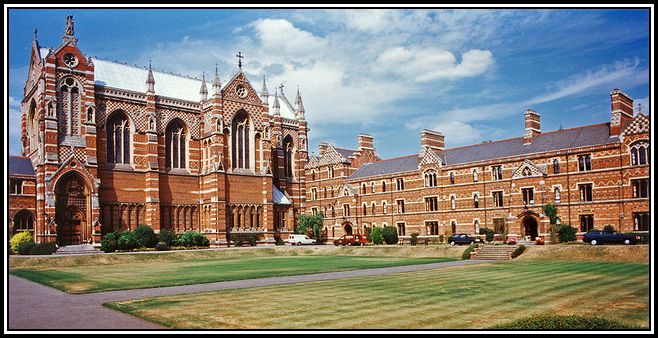

Hello Charles, In essence, a repeat of my earlier comments – thank you for another clear and interesting piece of social history, clearly placed in context and most enjoyable to read.